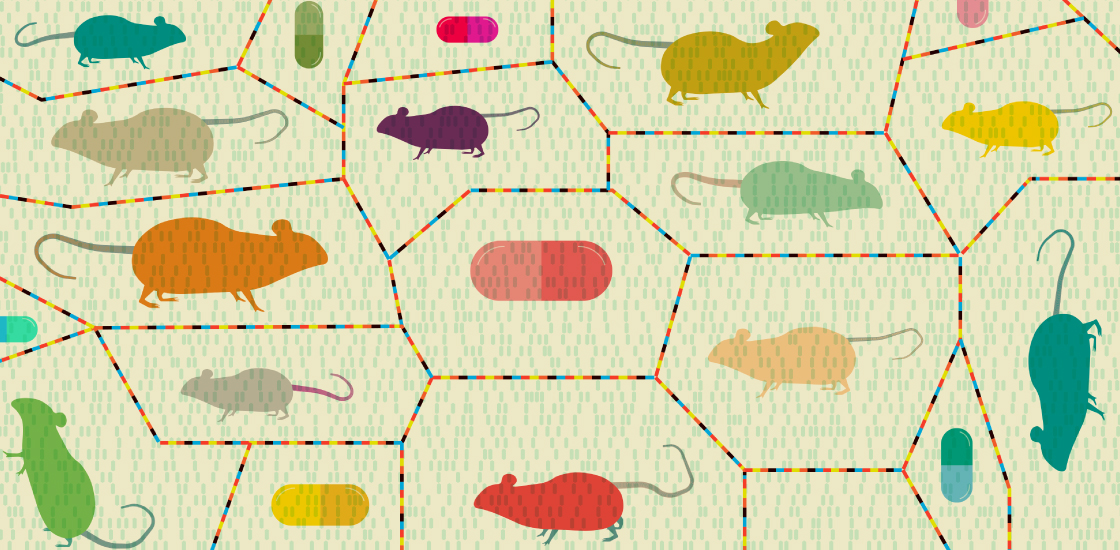Why it’s time to spin autism genes into drug screens
Autism researchers’ top priority should be shifting their focus to finding treatments for severe forms of the condition.

We’ve learned a lot about the genetics of autism in the past decade. And there is much more work being done to find autism genes.
I advocate a shift in focus: As a neuroscientist who has studied the genetic basis of autism for two decades, I think biomedical research should now concentrate on understanding and finding treatments for severe forms of the condition. Shifting our funding to develop such treatments should be our highest priority.
Much of what we’ve learned in autism genetics so far comes from mutations that occur in a child with autism but not in either of his parents. The mutations crop up either in the sperm or egg, or after the egg is fertilized1. Scientists have been able to link these spontaneous, or de novo, mutations in a number of genes to autism.
De novo mutations are especially common among people with severe autism, which is characterized by limited language ability, intellectual disability and often epilepsy, among other issues. Mild forms of autism, by contrast, may stem from a combination of inherited mutations — a phenomenon called polygenic inheritance — along with environmental influences.
It’s tricky to tease out environmental and polygenic risk factors for autism, but some teams are trying. The nonprofit advocacy group Autism Speaks is spearheading a project called MSSNG to sequence the DNA of 10,000 people with autism, with the goal of finding more autism genes. And the SPARK project aims to collect genetic and medical information for 50,000 people with autism and their family members. (SPARK is funded by the Simons Foundation, Spectrum’s parent organization.)
But projects like these won’t be able to find environmental influences or many of the polygenic factors with moderate to small effects because they don’t include detailed characterizations of the participants and their families.
Unraveling the roots of mild forms of autism will require researchers to combine a detailed study of individuals with autism and their families with a comprehensive genetic analysis. In this way, they may be able to link specific features of autism to both genetic profiles and environmental factors.
Unfortunately, few if any such experiments are in progress.
Mutation medicine:
Severely affected individuals are especially vulnerable and in need of help. What’s more, finding treatments for them is likely to be easier than for those on the mild end of the spectrum because we have a better handle on the genetic basis of severe autism. At the root of many cases of severe autism is a known de novo mutation.
Here’s an example of what might be possible. De novo mutations in a gene called SHANK3 are linked to a severe form of autism. Deletions in the gene cause Phelan-McDermid syndrome, a condition characterized by low muscle tone, intellectual disability and autism features.
Last year, scientists at the Massachusetts Institute of Technology used molecular tricks to reverse a SHANK3 mutation in mice2. They found that even in more mature mice, the correction leads to remarkable improvements, including positive changes in brain function and social interaction.
The technique the researchers deployed cannot be used in people. But it would be possible to use the mice to screen for drugs that lessen the effects of the mutation.
My colleagues reported earlier this year that it is possible to find drugs that dramatically improve the features of a related condition, fragile X syndrome, in mice3. They showed that a drug called metformin reverses many of the biochemical, electrophysiological and behavioral problems seen in the fragile X mouse model.
We do not know whether drugs that work in cells and animal models will also work in people. But available data suggest that partially correcting the defect even after a condition has taken hold — which is when doctors typically make a diagnosis — can lead to clinical improvement.
Redirecting resources:
How might such treatments work? In animal and cellular research, the improvement is likely to result from the brain’s plasticity — its ability to change over time in response to the environment. If we correct the defect, the brain will, at least in part, repair itself. Research on people who have become blind as children or adults suggests this plasticity is present even as we age4. So if we correct a genetic glitch linked to autism, putting the brain on the path to a neurotypical state, the brain might finish the job.
And so the task ahead is to find such treatments. We now have the tools to screen for drugs at a large scale. For example, we can use versatile adult stem cells called induced pluripotent stem cells to build cellular models of different types of autism.
Then we can use animals with mutations in key autism genes to vet the most promising drugs. We can also use these cells and animal models to better understand the biology of autism, which will help direct our search for treatments.
Our failure to focus on screening isn’t a matter of technology; it’s a matter of resources. Identifying drugs that will lead to clinical improvement for the most severe forms of autism should be our highest priority.
Guy Rouleau is director of McGill University’s Montreal Neurological Institute and Hospital in Canada.
References:
Recommended reading

Developmental delay patterns differ with diagnosis; and more

Split gene therapy delivers promise in mice modeling Dravet syndrome

Changes in autism scores across childhood differ between girls and boys
Explore more from The Transmitter

Smell studies often use unnaturally high odor concentrations, analysis reveals

‘Natural Neuroscience: Toward a Systems Neuroscience of Natural Behaviors,’ an excerpt
